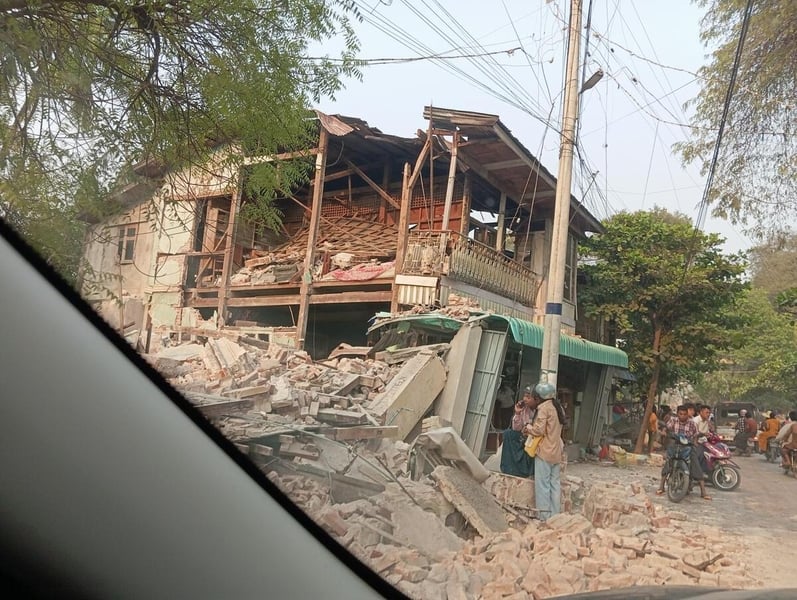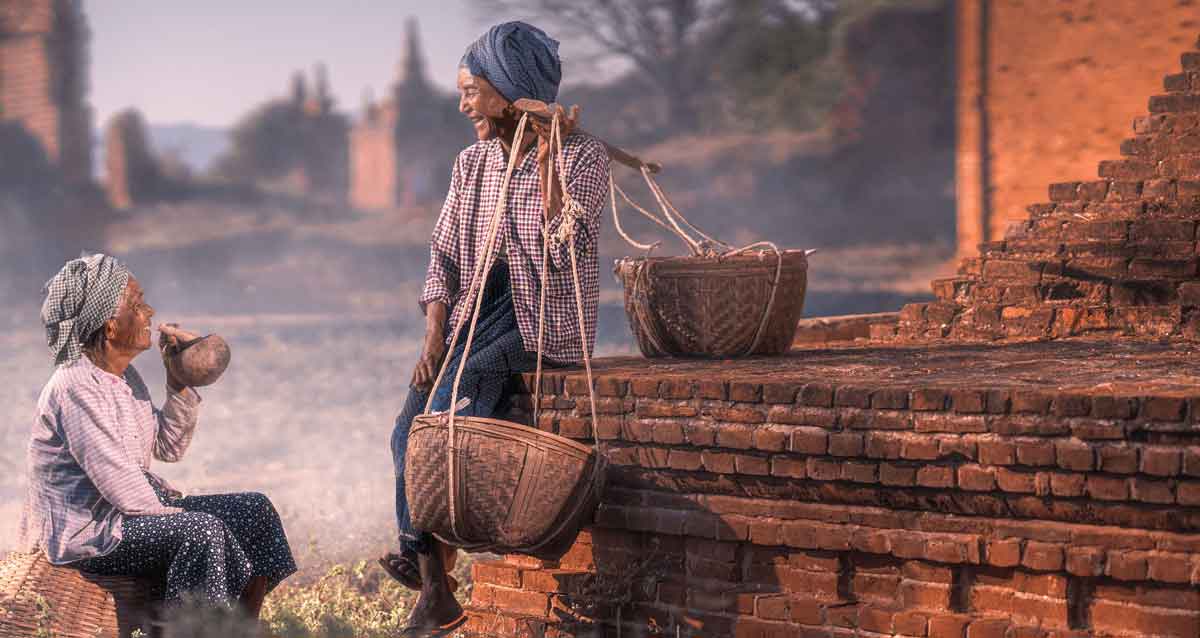Jul 30, 2025 • 4 min read
Emergency Situation After 7.7 Magnitude Earthquake
Overview On March 28, 2025, a powerful 7.7-magnitude earthquake struck central Myanmar, with its epicenter located near the Mandalay and Sagaing regions. This disaster stands as the deadliest earthquake the country has faced in recent memory. It came at a time when the nation was already grappling with ongoing political conflict, mass displacement, and widespread […]

A powerful 7.7 magnitude earthquake rocked central Myanmar near Mandalay, on March 28, 2025, toppling buildings and causing widespread destruction, as seen here. (© 2025 World Vision/photo by Swe Nyein)
Overview
On March 28, 2025, a powerful 7.7-magnitude earthquake struck central Myanmar, with its epicenter located near the Mandalay and Sagaing regions. This disaster stands as the deadliest earthquake the country has faced in recent memory. It came at a time when the nation was already grappling with ongoing political conflict, mass displacement, and widespread poverty. The quake caused widespread devastation, deepening the vulnerability of millions of people across the country. The earthquake has resulted in a tragic loss of life and widespread suffering. Over 3,770 people have been confirmed dead, and more than 5,100 have sustained injuries. These numbers are expected to rise as search and rescue operations continue, particularly in remote areas that remain difficult to access. An estimated 17 million people were affected by the quake. Many of them were already living in precarious conditions due to previous conflicts and displacement, compounding the impact of this natural disaster. The physical damage is extensive. More than 10,000 buildings—including homes, schools, religious structures, and clinics—have been either destroyed or rendered uninhabitable. Families have been forced into makeshift shelters, with little protection from the elements. In addition to the structural devastation, the timing of the earthquake—just before the monsoon season—has disrupted agricultural activities, which are a vital source of food and income in rural areas. This poses a serious threat to food security in the months ahead. The road to recovery is fraught with challenges. Many roads, bridges, and other critical infrastructure have been badly damaged, making it extremely difficult to deliver aid to affected regions. In some cases, access is further hindered by security concerns, including military checkpoints and ongoing armed conflict, which have limited the reach of humanitarian efforts. Health risks are also escalating. The displaced population faces overcrowded living conditions in temporary shelters, often without access to clean water or adequate sanitation. This increases the likelihood of disease outbreaks, especially with the monsoon season approaching. Despite the scale of the disaster, aid remains insufficient. The United Nations has issued an emergency appeal for $275 million to address the urgent needs of 1.1 million people, but only a fraction of this funding has been secured to date. There remain critical shortages in emergency shelter materials, medical supplies, safe drinking water, and food support.
GHNI Relief update
Due to concerns about exhausting our relief funds, we used a local partner’s vehicle to travel from Yangon to Mandalay after refueling. We also brought along four volunteers to assist with labor. In Mandalay, where certain items are either hard to find or expensive, we purchased necessary goods from Yangon. Additionally, we bought supplies requested by another relief organization operating in the area, GHNI Myanmar Local Network. Mandalay has suffered significant damage, particularly in terms of lost livelihoods, severe shortages of drinking and usable water, and widespread trauma among residents, who are now even afraid to stay inside their own homes. The extreme heat, coupled with the lack of electricity, has further worsened their living conditions. When GHNI provided assistance, including the arrival of a generator, it ensured sufficient water supply for 40 households (around 120 people), for which they expressed deep gratitude. These families also thanked GHNI Myanmar and its partner organizations for their weekly food distributions, which have helped ease their food insecurity. Our team distributed one week’s worth of food rations to 250 households in Sagaing town, located near Mandalay. The current situation—uninhabitable buildings, no electricity, and scarce job opportunities—continues to cause anxiety among the local population.
Water Filter Update
In addition, GHNI Thailand team managed to send hundreds of water filters for the victims in Sagaing and Mandalay. After the event, people suffered clean water shortage and so much rely on water bottles distributed by relief workers which is good to solve the immediate needs however with long lasting environmental problems with the plastic bottles. Despite the challenging logistics, the team successfully delivered the filters and contributed to those communities in urgent needs. Just today, we heard from our partner there that the second delivery arrived, and they started the distribution process.
Impacts
GHNI relief meets the needs of the people and gives them a beacon of hope in one of their darkest times. The beneficiary not only has food, water, and light, but also they have the courage to survive and hope for a better future.

